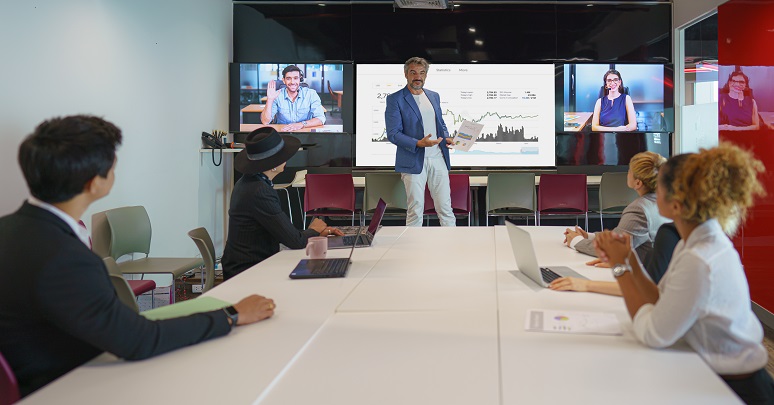When employees left their offices and took up remote work almost exactly a year ago, they left behind video rooms whose technology level has since been, well, left behind. After a year of remote desktop videoconferencing, people’s expectations have changed, and enterprises will have to raise their game when it comes to the post-pandemic conference room.
That was the consensus in a discussion during this week’s Enterprise Connect virtual event,
Communications & Collaboration: 2024, which the session leader, Ira Weinstein, founder and managing partner of Recon Research, focused as “
The Future of Video Conferencing: Business Value, Not Just Features.” Weinstein’s panel of video vendor execs agreed that an improved experience will have more to do with video quality and ease of use than the kinds of features, like backgrounds and filters, that video vendors competed to roll out over the past 12 months.
“A good A/V experience is table stakes” in the meeting room of the future if an enterprise wants to bring people back to the office successfully, argued panelist Gary Sorrentino, global deputy CIO at Zoom.
That implies that many enterprises will need to upgrade most if not all of their conference rooms with current-generation video systems. Granted, video vendors have a strong incentive to make this case, but it’s also backed up by enterprise execs
surveyed by IT research firm Metrigy.
In agreeing that quality of experience will be table stakes going forward, Beau Wilder, VP and GM for video collaboration at Poly, noted that users will bring their experience of the last year with them when they return to the office, and that this experience, on the whole, was pretty good.
But that raised the question of just how good the going-forward conference room experience will have to be. “Is good enough good enough?” Weinstein asked.
“What I left as good enough [a year ago] is not good enough when I come back,” Sorrentino replied.
Furthermore, the enterprise has no choice but to provide a high-quality experience, added Simon Dudley, head of analyst relations at Logitech. As an industry veteran, he said, “I hate to admit it, but for 30 years, videoconferencing was not mission critical” — but now it is.
Beyond providing quality of experience, enterprises will have to figure out appropriate ways to use the new video systems’ capabilities for monitoring and data gathering to manage room utilization, without veering into Big Brother territory, the panelists said. Weinstein noted that IT/AV managers are used to getting basic usage information such as whether the video is up or down in a room. Now they’ll be able to get information on the room itself, and the people in it, from AI-driven sensors and other features. They may need to use this information to make sure those in the room conform to corporate guidelines on distancing and other safety best practices.
That opens up the challenge of what to do with the data. “If two people are sitting too close to each other in a conference room, are you going to have ninjas swing down on ropes” to separate them?” Wilder asked. Sorrentino added that IT/AV teams shouldn’t be expected to be the enforcers: “If I have to tell the CEO to leave the room, I’m going home.”
Presumably enterprises (and their vendors) will come up with better ways of enforcing whatever safety mandates accompany the return to the office. But this discussion made clear that room videoconferencing in the post-COVID office will be about the complete user experience, from booking the space to the way they interact with participants in the room and at remote locations.









